Co-Authored with Bárbara I. Abadía-Rexach
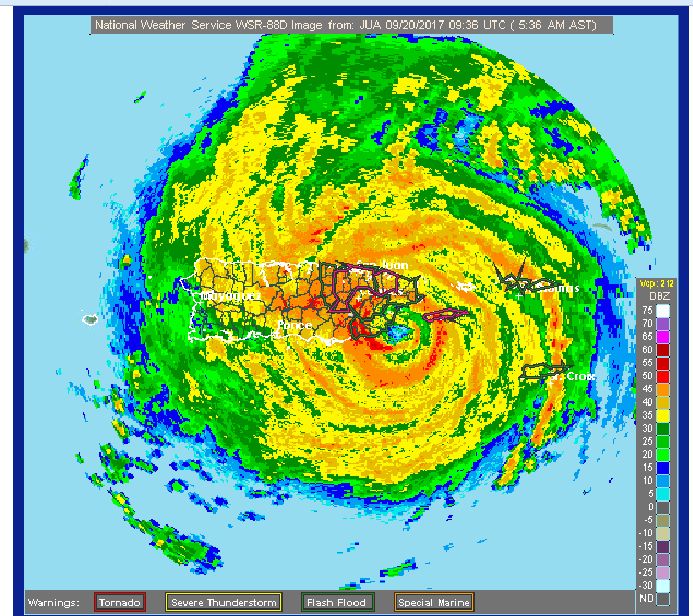
Radar in San Juan showing Hurricane Maria. The radar was knocked out after this image was taken.
A “NATURAL” DISASTER?
September 20, 2017 is now part of the collective memory of the Puerto Rican people, both on and off the island. For 12 straight hours, each of the 78 municipalities that make up the archipelago endured catastrophic winds and relentless rain. Today we speak of a Puerto Rico before-and-after Hurricane María.
Despite all the warnings of potential disaster, there was no way to prepare (in the short-term) for the fury of a Category 4 hurricane, with winds surpassing 150 miles per hour. Modern Puerto Rico was not built, or maintained, to withstand it.
The storm’s devastation exposed entire communities to the elements. The island’s electrical, water, and telecommunications services – as the hurricane-chasing media reported – collapsed.
María revealed the fragility of the commonwealth’s government, laying bare its lack of organization and resources. It also revived long-running debates about the status of the island:
Is Puerto Rico a colony of the United States? Or, are Puerto Ricans really U.S. citizens with all the rights that should entail?
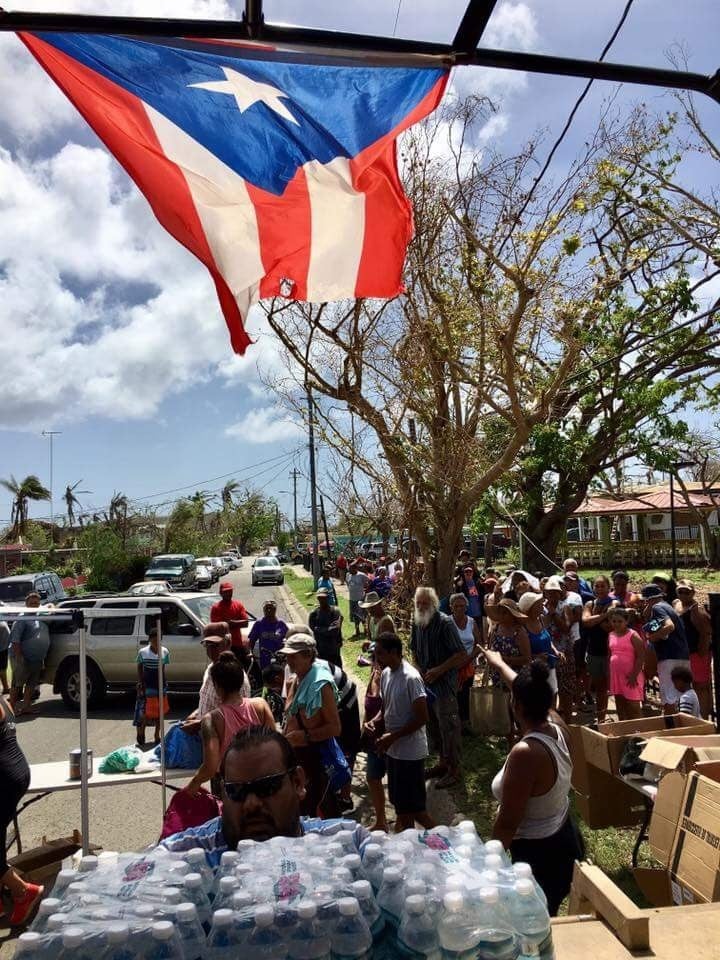
ISLAND IN THE DARK
One year earlier, on September 21, 2016, Puerto Ricans were also left in the dark, following the failure of the Aguirre Central Thermoelectric plant. Located in the southern part of the island, but serving the northern and more urban coast, the Aguirre plant failure affected some 1.5 million residents. There was much speculation as to the cause of the blackout. The open secret, however, was that lagging maintenance, as well as the precarious and vulnerable state of the electrical server, had thrown nearly half the population into modern darkness.
The commonwealth government, in an effort to deal with its debt crisis, reduced both the budget and the number of line workers maintaining the electrical grid. As Iván Sánchez Almodóvar, a former employee of the now bankrupt Puerto Rico Electric Power Authority (PREPA), told us: “The intention, from the central government, is to privatize the agency. They started with the reduction of employees, from 9,000 down to 6,500.” Since 2012, PREPA, which serves the entire island’s energy needs, has lost more than 30 percent of its workers.
Hurricane or not, Puerto Rico’s infrastructure has been on the verge of disaster for not only a year, but perhaps decades.
This year, in the throes of hurricane season, the memory of that blackout haunted residents anticipating Hurricane Irma. Arriving on September 6, just two weeks before its more punishing successor, Irma hit the island municipality of Culebra and the city of Loíza, before shifting north to the Gulf of Mexico and eventually arriving to the U.S. mainland. Only a small section of the island experienced the fierce and howling winds of the storm. Nevertheless, thousands of Puerto Ricans lost electricity. Many of those communities have been without power since Irma; over 3 months later.
When María approached the island then, there was recent precedent for an island-wide blackout. On the eve of landfall, government authorities cut utility services as a preventative measure. Hurricane María would arrive to a Puerto Rico already without electricity or running water. Eighty-five days later some 35% of the population remains in that condition, according to government authorities.
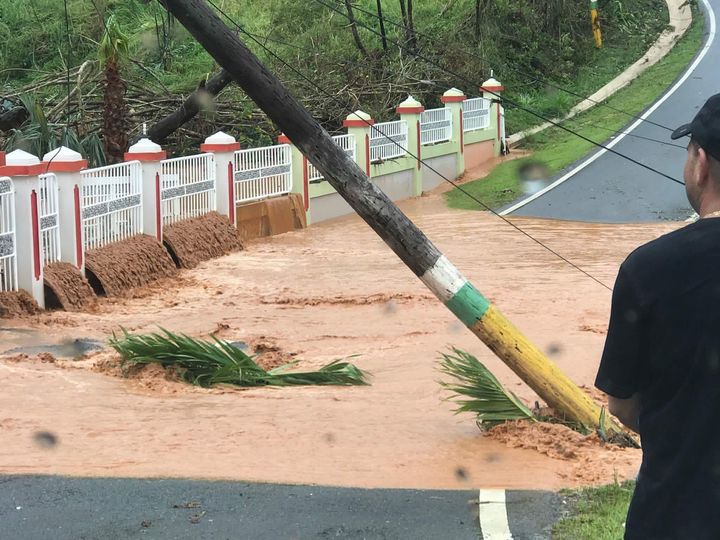
Barranquitas, Puerto Rico
MARÍA’S AFTERMATH?
Hurricane María’s winds weakened in the time between making landfall near Yabucoa on the southeast coast of the island and its exit through Camuy on the northwest coast. But that encounter with the land did not seem to matter. The country entered a shared state of emergency.
The next day, with the rain and wind gone, mile-long lines of cars formed waiting for gasoline and diesel. Other people stood in long queues to buy food, water, and ice.
A war, it seemed, had just ended, and Puerto Ricans were its refugees. Stores, with no way to process credit cards or food stamps, turned desperate customers away. Meanwhile the banks ran out of cash. System collapse.
The U.S. Navy sent its hospital ship, the USNS Comfort, to help. Sailing from Norfolk, Virginia to the island the ship arrived, however, on October 3 some two weeks after the storm. San Juan’s emergency generators, in the meantime, went without the necessary diesel to operate clinics, surgical rooms, and dialysis centers. There was also a shortage of medicine. There were, for example, no tetanus shots available.
In lieu of the lack of medical services, the death count of 62 people originally associated with Hurricane María is what some would call real “fake news.” As the Center of Investigative Journalism in San Juan reported, and most recently the New York Times, the true cost may be over a thousand lives.
The breakdown of telecommunication services also increased fear and anxiety. In the aftermath of the storm, friends and families were unable to reach loved ones on and off the island. Telephone servers were destroyed, and many communities did not have satellite telephones to reach the central government or neighboring cities. Despite being on an island no bigger than the state of Connecticut, residents were cut off from the island’s government and the outside world. Radio transmitters lost their antennas to the wind; only one station stayed on the air to report the unfolding disaster. Although U.S. citizens, being able to communicate with the Federal Emergency Management Agency (FEMA) became a privilege reserved for the fortunate few.
Amidst this backdrop, came the remilitarization of the country – with lines of military vehicles and members of the U.S. Armed Forces bearing automatic weapons at gas stations and hospitals. Adjacent to these soldiers, Puerto Ricans cleared paths, shared stories of tragedy and solidarity, and helped one another begin the slow process of reorganizing life. It was as if the ghost of 1898 had come back again.
For many, the solution has been to leave. The island’s decade long demographic decline has intensified. Elderly people have fled in search of medical attention; parents, thinking about their children’s future, have uprooted to the mainland. Since the hurricane, an estimated 200,000 people have emigrated to Florida and other mainland states.
¡ESTAMOS BIEN! / WE ARE DOING OK!
Some three months later, although hurricane season has ended, the island territory continues to be ravaged by a number of storms (now human-directed). As the oldest colony in the world (1508 to the present), Puerto Rico has been exploited repeatedly. Although meteorologists can predict – with remarkable precision – when a hurricane might affect a given territory, the American government failed (or chose not) to coordinate rescue teams and preventative aid. While mainland storm victims in places like Houston and Miami received immediate support, Puerto Ricans were in limbo for weeks, unsure if and when federal aid might arrive.
It seems Puerto Ricans can serve and die for the nation, but be forgotten in times of domestic crisis. The island, as the Supreme Court once declared, is a possession rather than a member of the United States.
Nevertheless, Puerto Ricans continue to express that – in spite of everything – they are okay, they are alive. It could be worse; most are lucky.
Boricuas (Puerto Ricans) are okay despite the 70 billion-dollar debt that grows every day and the fact that the island flounders in bankruptcy. Boricuas are okay with the elevated unemployment rate of over ten percent. Okay with the schools that still have not opened to educate their children. They are okay, even if the police arrest teachers who protest for their schools to reopen. Okay, even if rampant corruption continues. Okay so long as the electricity returns. They are okay, even if there is no guarantee that the water flowing from their faucet is safe to drink. Okay, even if the island’s forests and biological diversity take decades to recover. Okay, even though they live surrounded by uncollected trash. Okay, even if traffic accidents pile up around broken streetlights. Okay, even if they continue to be victims of climate change, which will certainly grow worse under a government that denies science. Boricuas – our brothers and sisters – are okay because to live in this ancient colony requires accepting instability, scarcity, and second-class citizenship.
The new meme – #PuertoRicoSeLevanta (#PuertoRicoRises)- still depends on whether the empire will release its tentacles and lift the 100-year-old de facto embargo, the Jones Act.
Under and around this state of twenty-first century injustice, the Puerto Rican diaspora, stretching from universities and organizations in the United States and the Americas, has created an overwhelming sense of hurricane solidarity. The people of Puerto Rico have weathered many storms before – colonial, natural, and as witnessed with Maria, dangerous combinations of the two. Perhaps it is because of this history of suffering and resilience that Puerto Ricans are still able to say, “We will be okay.”
Today, though, there is a new sense of urgency. The inalienable rights and wellbeing of 3 million U.S. citizens inhabiting the Puerto Rican archipelago can no longer be denied by corrupt politics and outdated colonial ways of thinking. Puerto Rico will rise again. But how, remains uncertain…
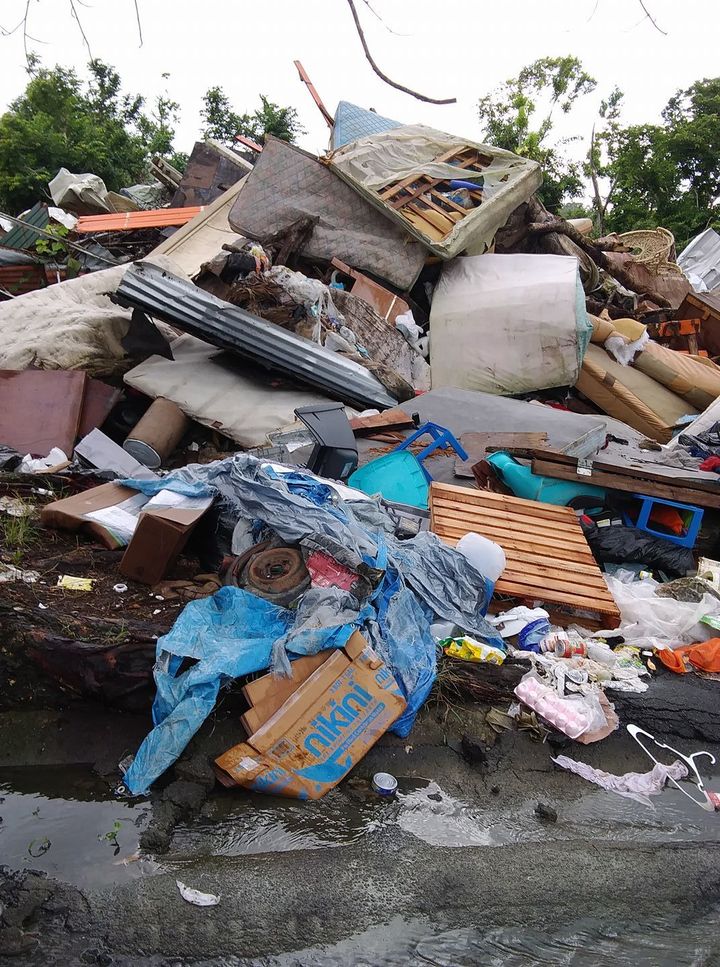
Colinas de El Yunque, Río Grande Puerto Rico.
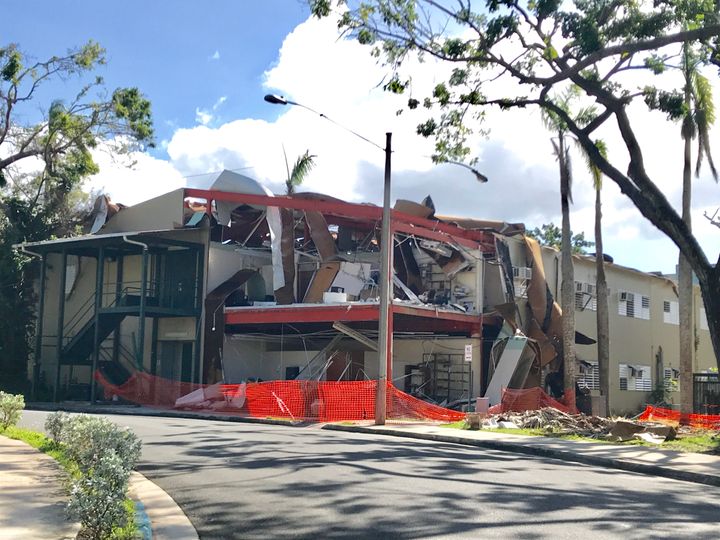
Taken on December 9, 2017, Anexo Facundo Bueso, Universidad de Puerto Rico, Recinto de Río Piedras.
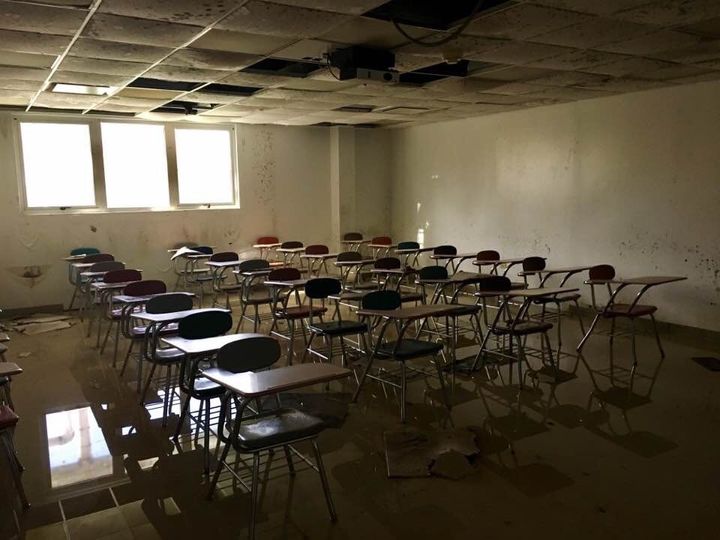
School of Communication at the University of Puerto Rico, Río Piedras Campus.
